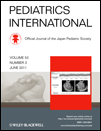Evaluation of growth and neurodevelopment in children with congenital heart disease
Abstract
Background: Children with congenital heart disease are under risk of delayed growth and development. We evaluated physical growth parameters and neurodevelopment in these patients in comparison with normal children and examined the effect of hemodynamic status.
Methods: Patients with congenital heart disease (n= 76) and healthy children (n= 51) aged 1–72 months applied to Mersin University Hospital, Mersin, Turkey were included. Patients with heart failure and those requiring intervention or surgery were classified as hemodynamically impaired (HI group, n= 30), and the others, hemodynamically normal (HN group, n= 46). Growth parameters including weight, height, body mass index (BMI), mid-arm circumference (MAC), and triceps skin fold thickness (TSF) were measured and standard deviations (SD) were determined. Functional development was assessed by Denver Developmental Screening Test-II (DDST II).
Results: MAC and BMI values of the group with impaired hemodynamic status were significantly lower than the hemodynamically normal and control groups (MAC P < 0.05 and BMI P < 0.01). In the DDST II, the group with hemodynamic abnormality had more failures in gross motor and fine motor skills than HN group and controls (gross motor P= 0.011, P < 0.001 and fine motor P= 0.028, P= 0.001, respectively) and more failures in language development than the control group (P= 0.001).
Conclusion: The results showed the importance of hemodynamic status in growth and neurodevelopment of children with congenital heart disease. Besides routine growth parameters, more detailed examinations such as BMI, MAC, TSF, and developmental screening tests appear useful in identifying children with cardiac disease who are under risk for delayed growth and development.




